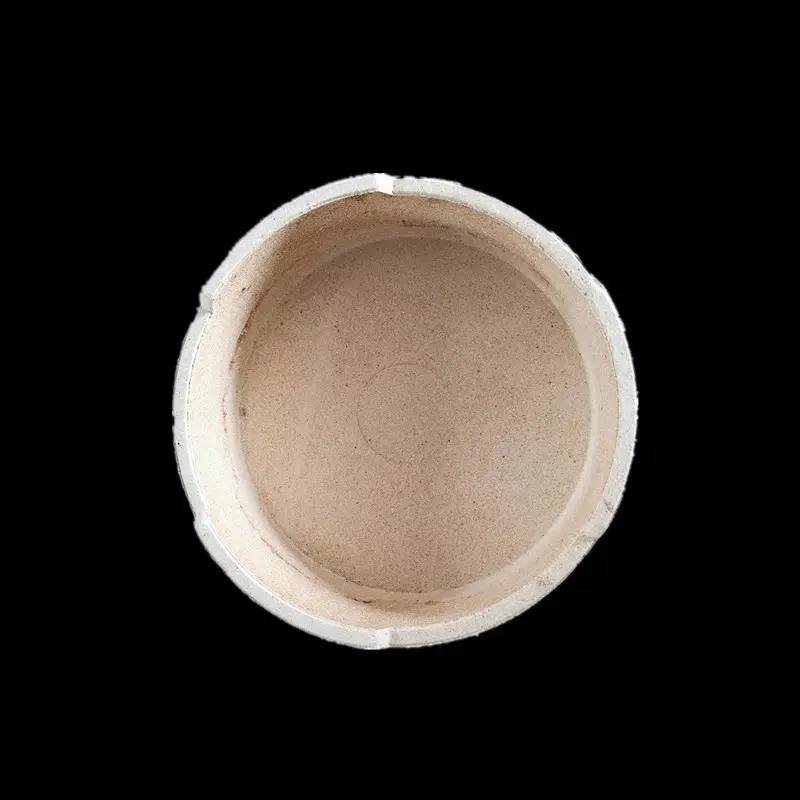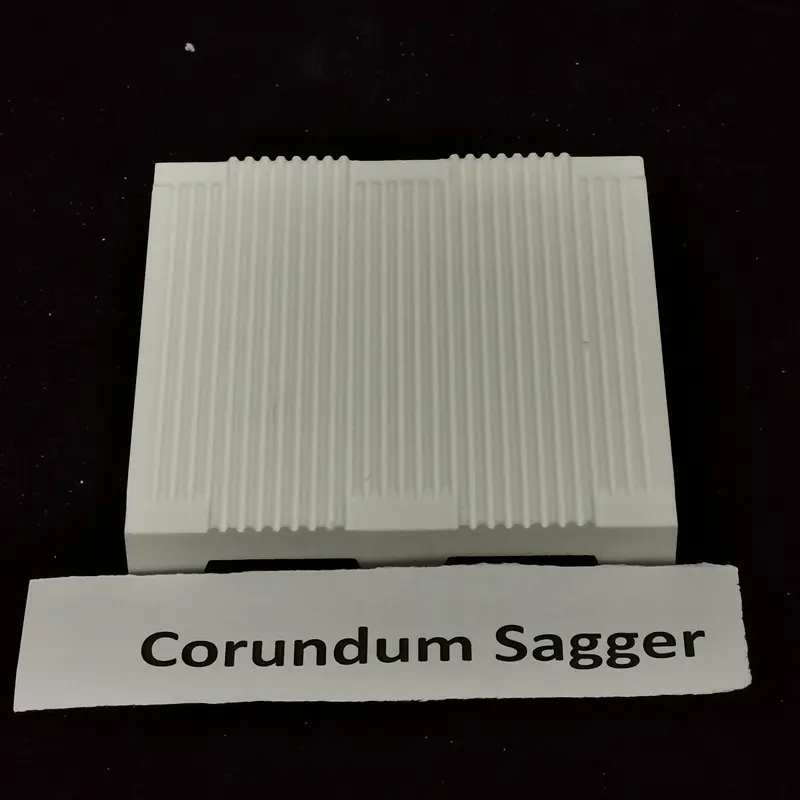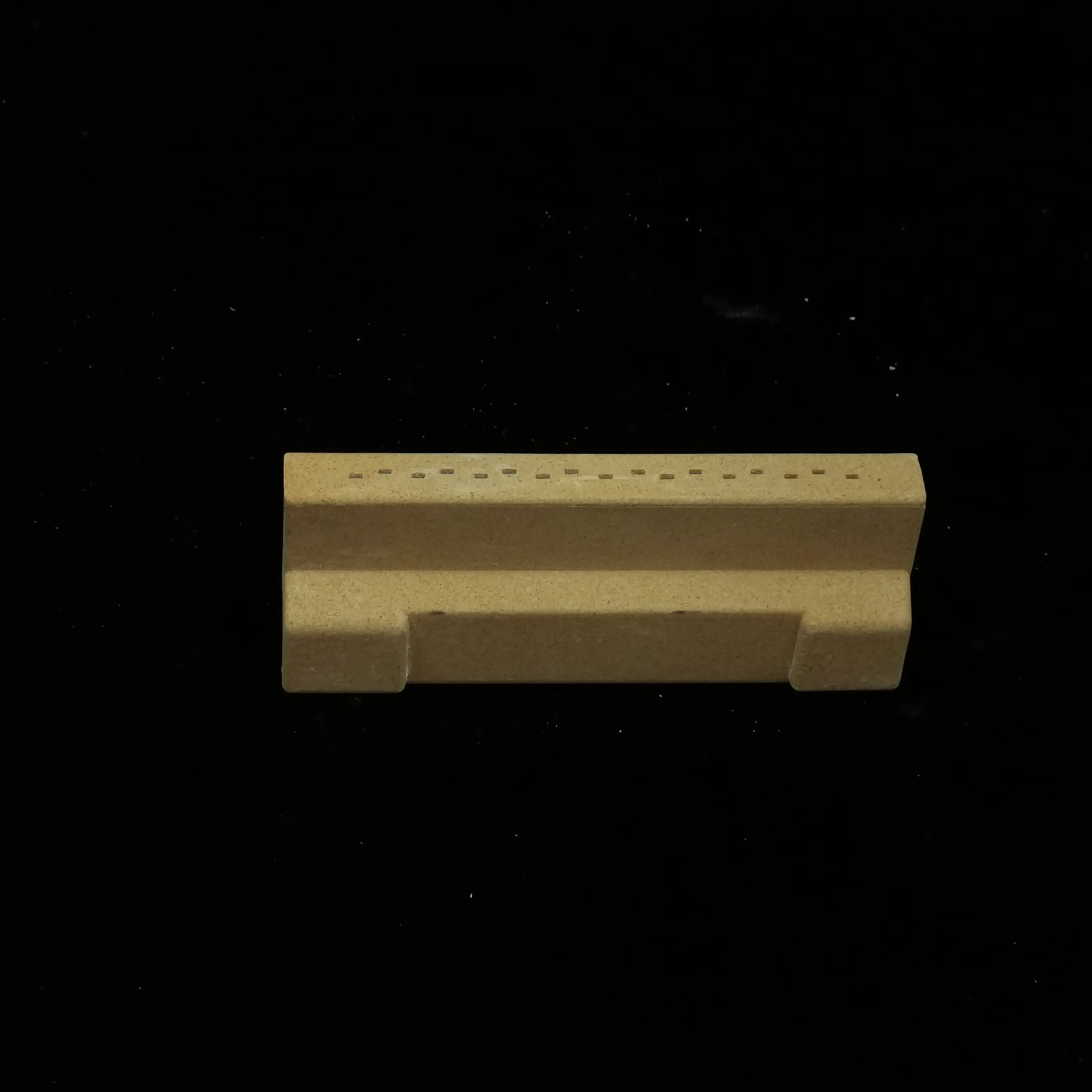High temperature resistance refractory Corundum-Mullite Saggars for Electronic Ceramic Sintering
The unique combination of corundum (α-Al₂O₃) and mullite (3Al₂O₃·2SiO₂) in these saggars provides an optimal balance of properties essential for electronic ceramic sintering. Corundum contributes high mechanical strength and excellent chemical stability, while mullite offers outstanding thermal shock resistance and low thermal expansion. This synergy makes corundum-mullite saggars particularly suitable for the demanding conditions of electronic ceramic production, where firing temperatures typically range from 1300°C to 1600°C.
In MLCC manufacturing, these saggars demonstrate remarkable performance advantages. Their low thermal expansion coefficient (4.5-5.5×10⁻⁶/°C) matches well with common dielectric materials, minimizing stress during heating and cooling cycles. The saggars' high purity (Al₂O₃ content >85%) prevents contamination of sensitive barium titanate-based formulations, ensuring consistent dielectric properties in the final products. Furthermore, their excellent thermal shock resistance allows for rapid temperature changes up to 200°C/min, significantly improving production efficiency in modern fast-firing processes.
For piezoelectric ceramics like PZT (lead zirconate titanate), corundum-mullite saggars offer crucial benefits. Their chemical inertness prevents reaction with volatile lead oxide components at high temperatures, maintaining compositional accuracy in the sintered products. The saggars' structural stability during prolonged firing cycles (often 10-20 hours) ensures dimensional precision of delicate piezoelectric elements. Additionally, their low porosity (<3%) minimizes gas permeability, creating a stable atmosphere for controlled sintering.
Microwave dielectric ceramic production particularly benefits from these saggars' uniform thermal distribution properties. The composite material's moderate thermal conductivity (3-5 W/m·K) helps maintain temperature homogeneity within the firing chamber, critical for achieving consistent dielectric constant (εr) and quality factor (Q) values in materials like Ba(Mg₁/₃Ta₂/₃)O₃. The saggars' smooth surface finish also prevents sticking of fine ceramic powders during sintering.
Compared to traditional materials, corundum-mullite saggars offer significant advantages in electronic ceramic applications. While pure alumina saggars exhibit higher mechanical strength, they are more prone to thermal shock failure. Silicon carbide saggars, though having superior thermal conductivity, often cause contamination issues. The corundum-mullite composition provides an optimal compromise, with service lifetimes typically 3-5 times longer than conventional clay-bonded saggars in electronic ceramic production.
Modern manufacturing techniques have further enhanced these saggars' performance. Advanced slip casting methods allow production of complex shapes with wall thicknesses as low as 3mm, improving thermal efficiency. Grain size optimization (typically 5-20μm) balances strength and thermal shock resistance. Some premium grades incorporate small amounts of zirconia or rare earth oxides to further enhance mechanical properties without compromising chemical purity.
The economic benefits of corundum-mullite saggars in electronic ceramic production are substantial. Their extended service life (often 50-100 firing cycles) reduces replacement frequency and downtime. The improved product consistency they enable decreases rejection rates of high-value electronic components. Energy savings of 10-15% are achievable due to their lower thermal mass compared to traditional saggars.
Ongoing developments focus on nanotechnology-enhanced formulations and customized compositions for specific electronic ceramics. Some manufacturers now offer gradient-structured saggars with compositionally varied layers to optimize both surface and bulk properties. These innovations continue to expand the applications of corundum-mullite saggars in the rapidly growing electronic ceramics industry.
In conclusion, corundum-mullite saggars have become a critical enabling technology for high-quality electronic ceramic manufacturing. Their unique combination of thermal, mechanical, and chemical properties addresses the stringent requirements of modern electronic component production, while their evolving designs continue to meet the industry's advancing needs. As electronic devices demand increasingly sophisticated ceramic materials, the role of these specialized saggars will only grow in importance.





